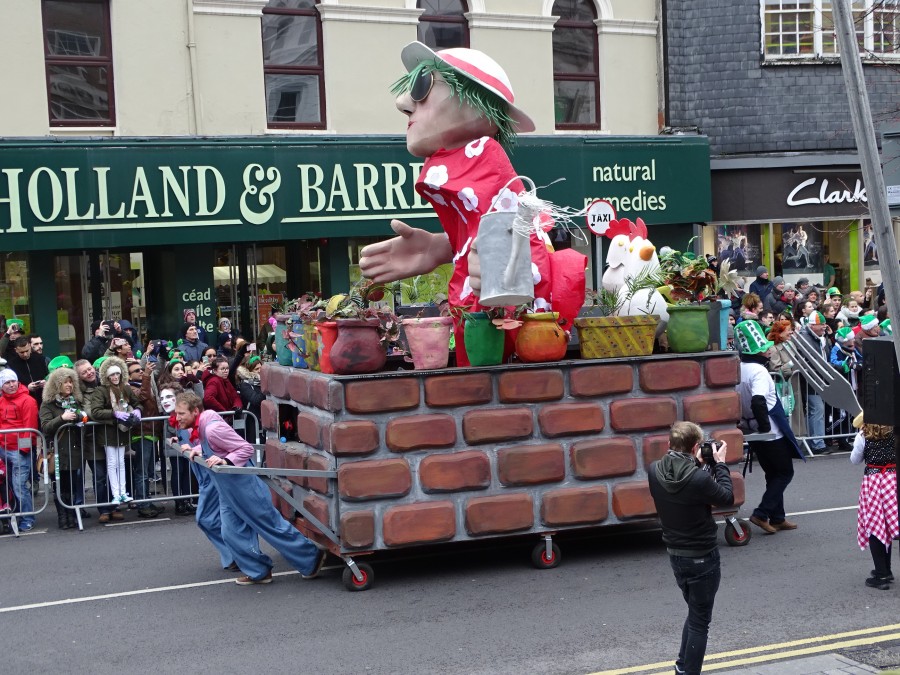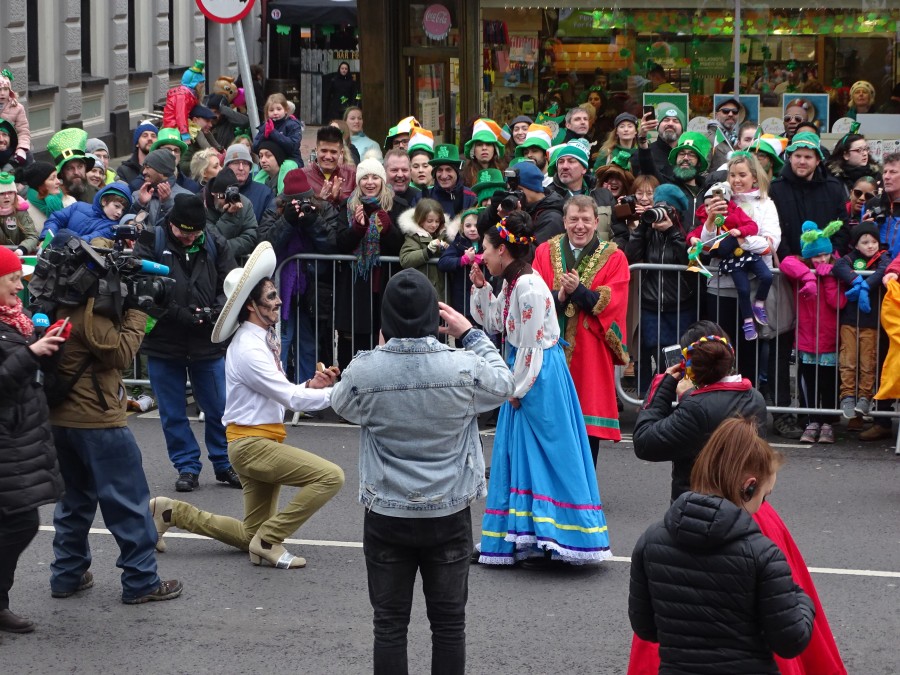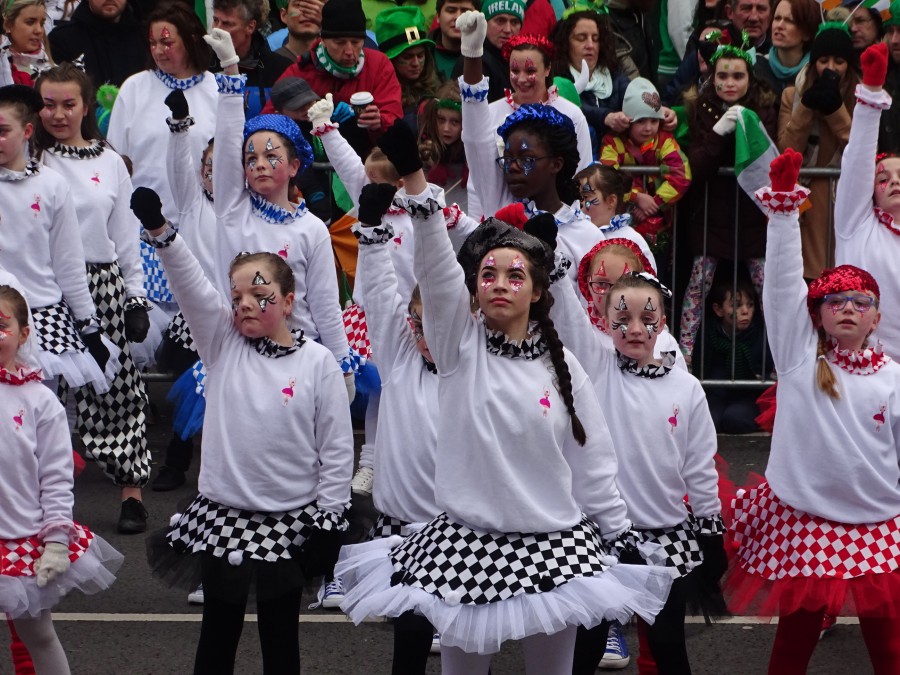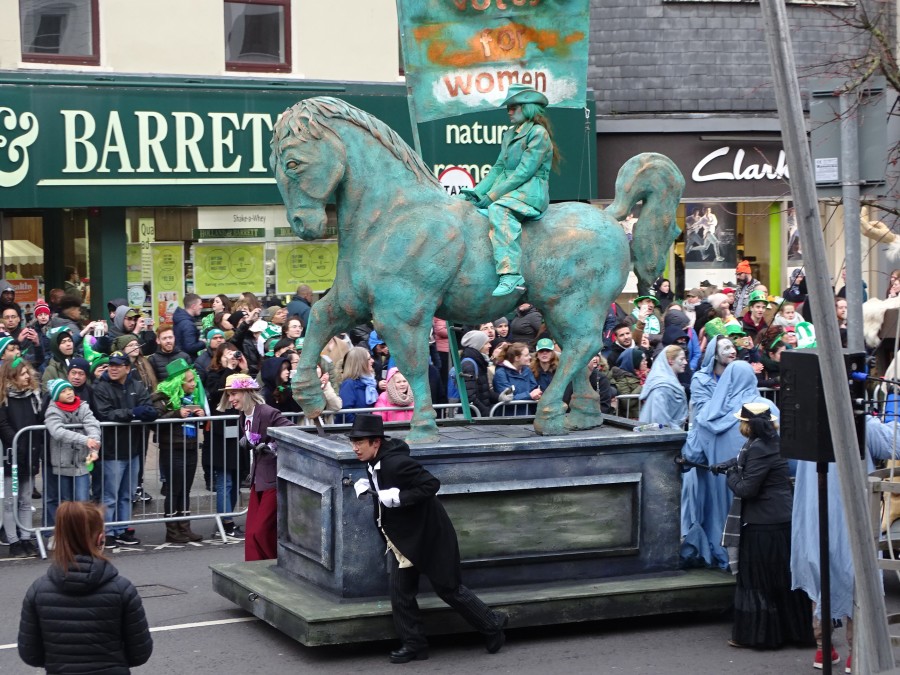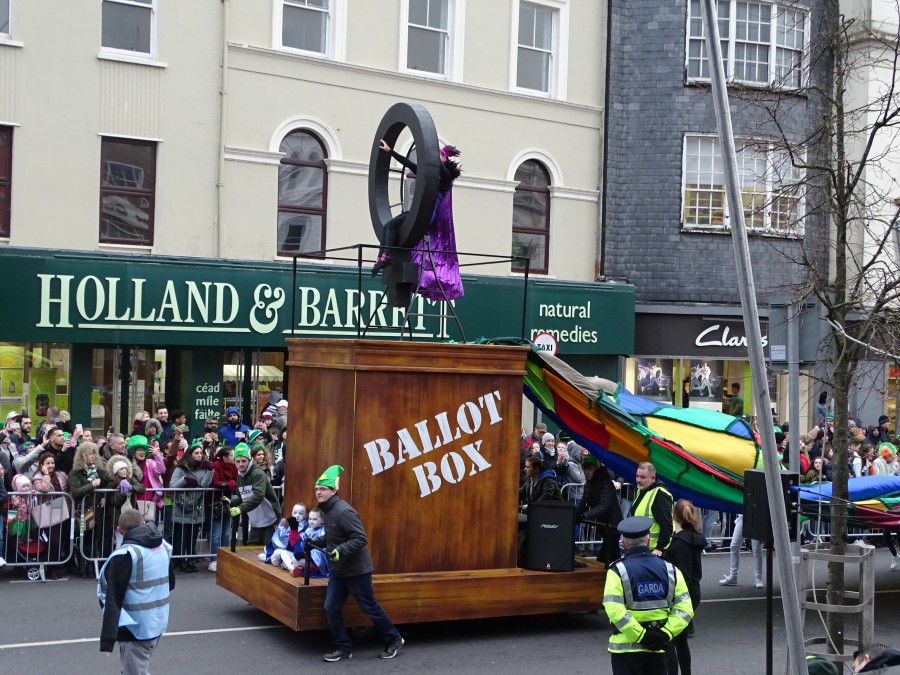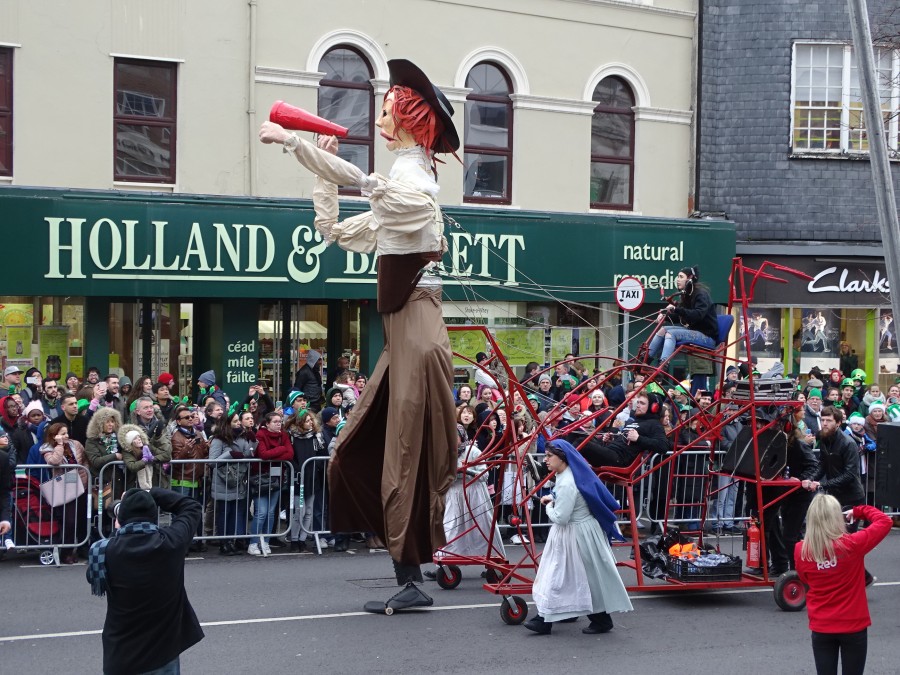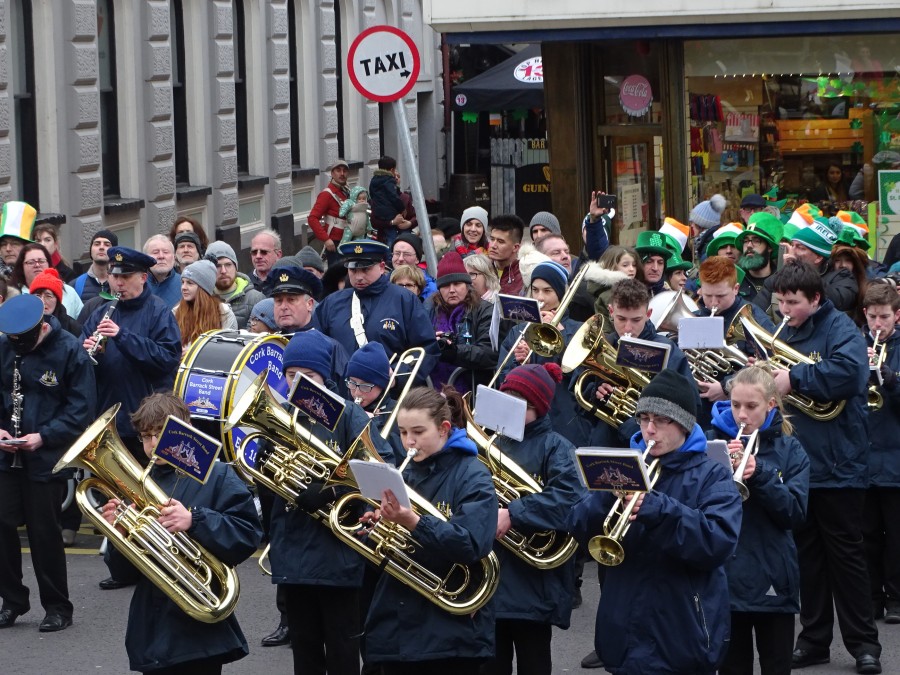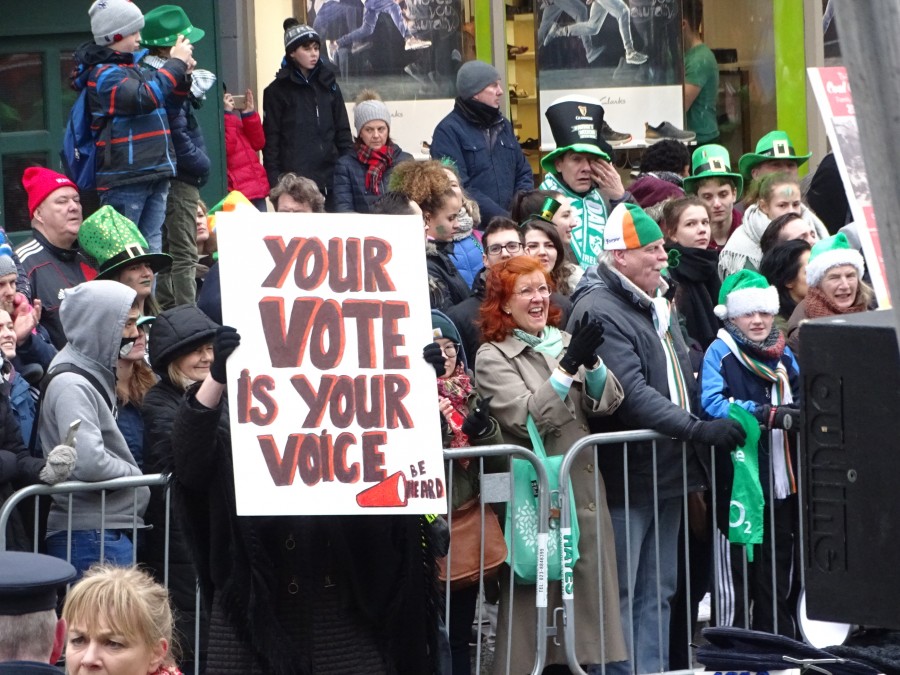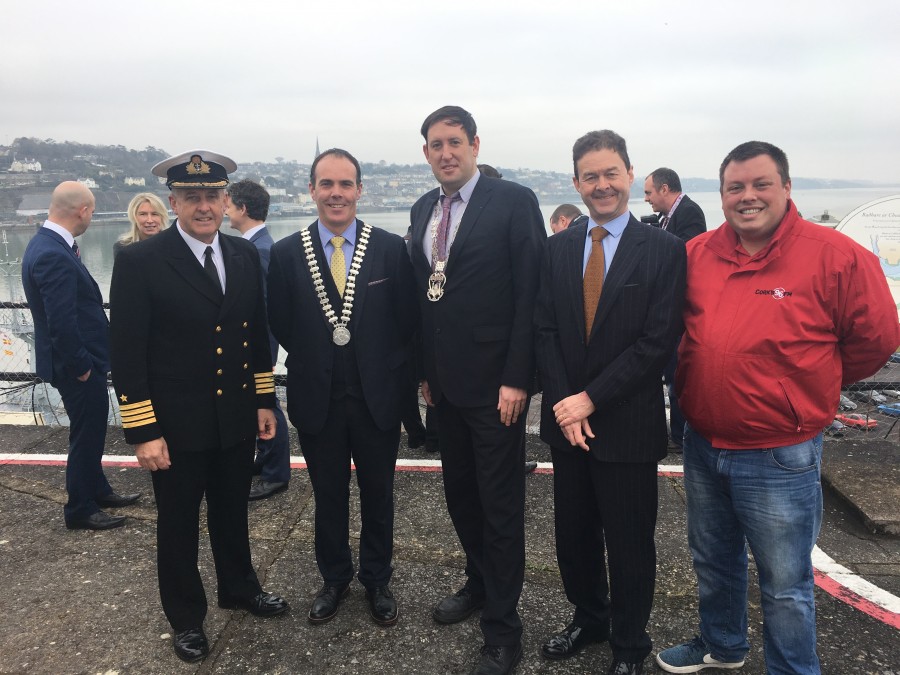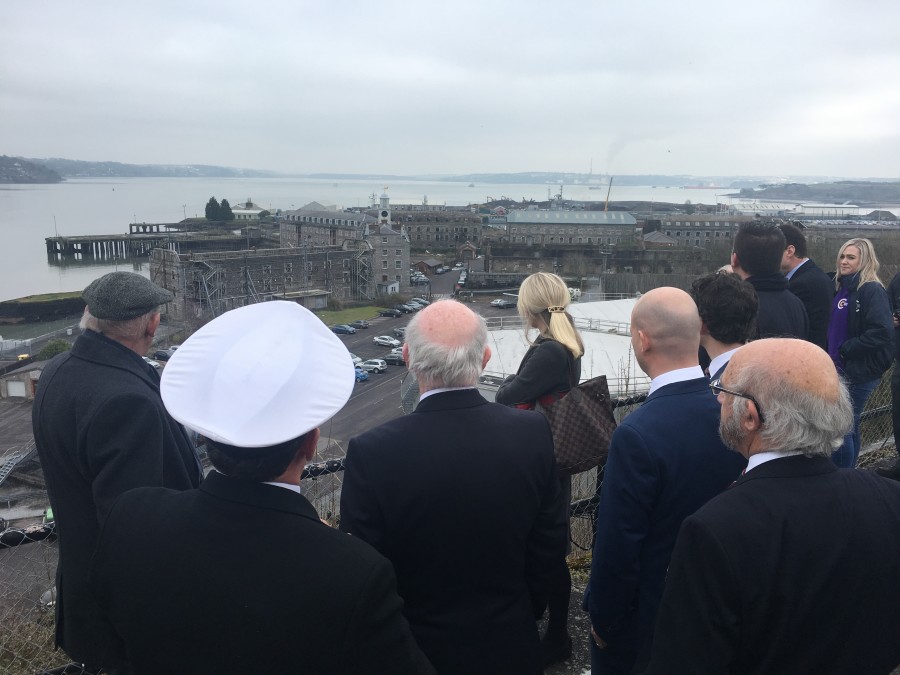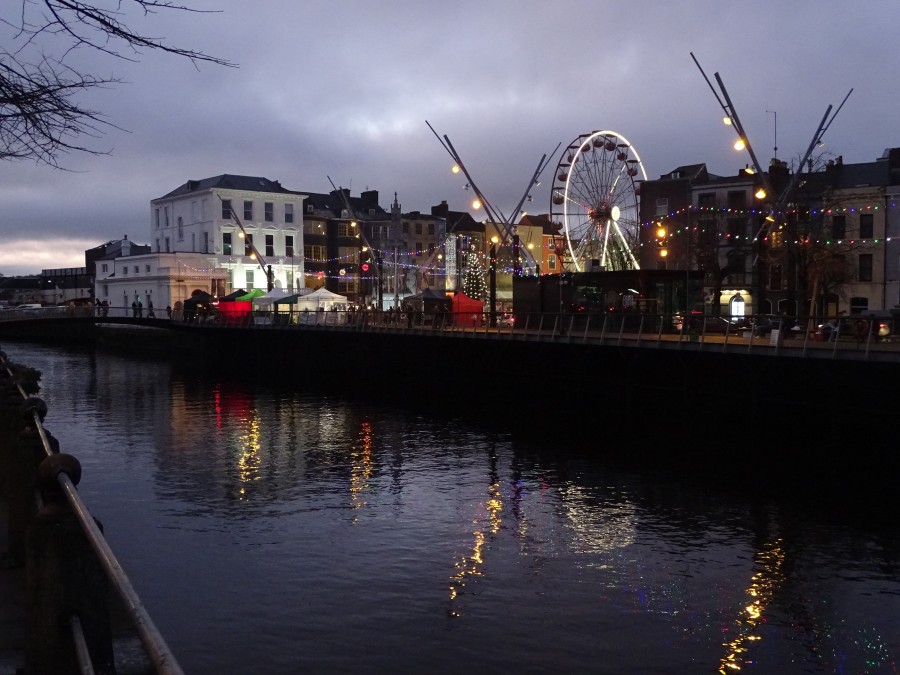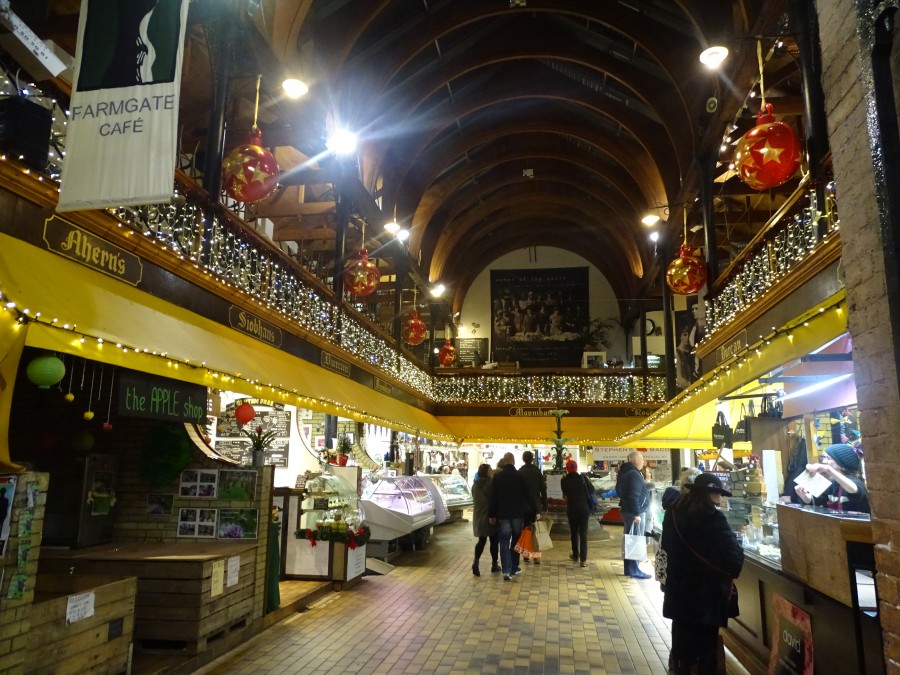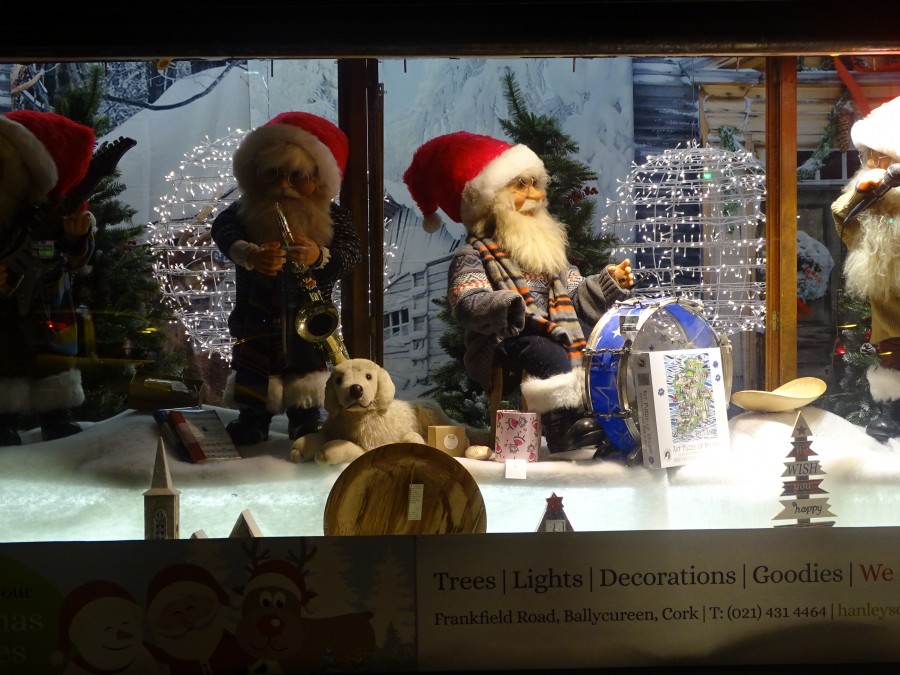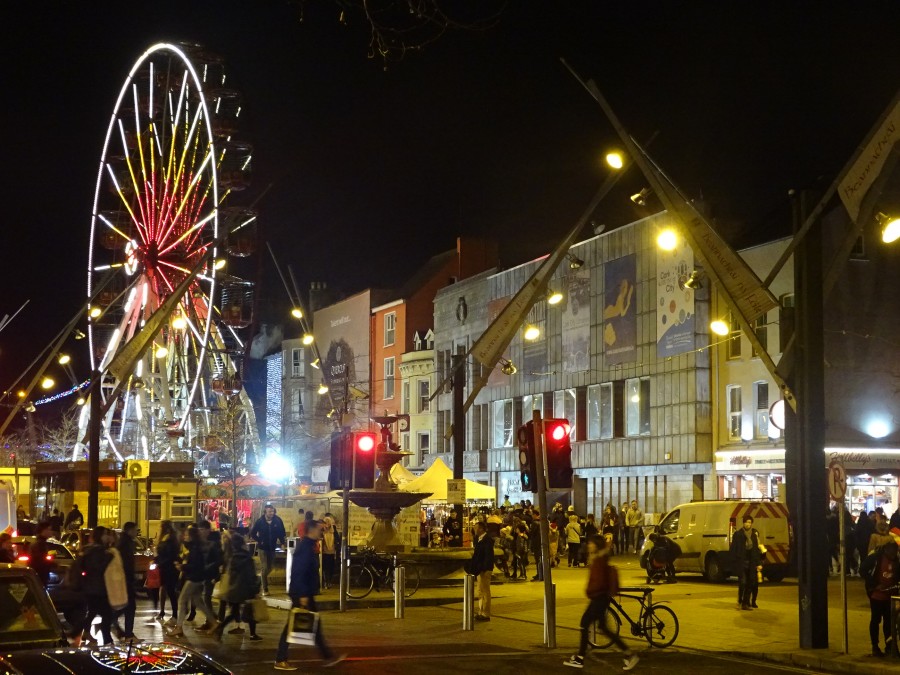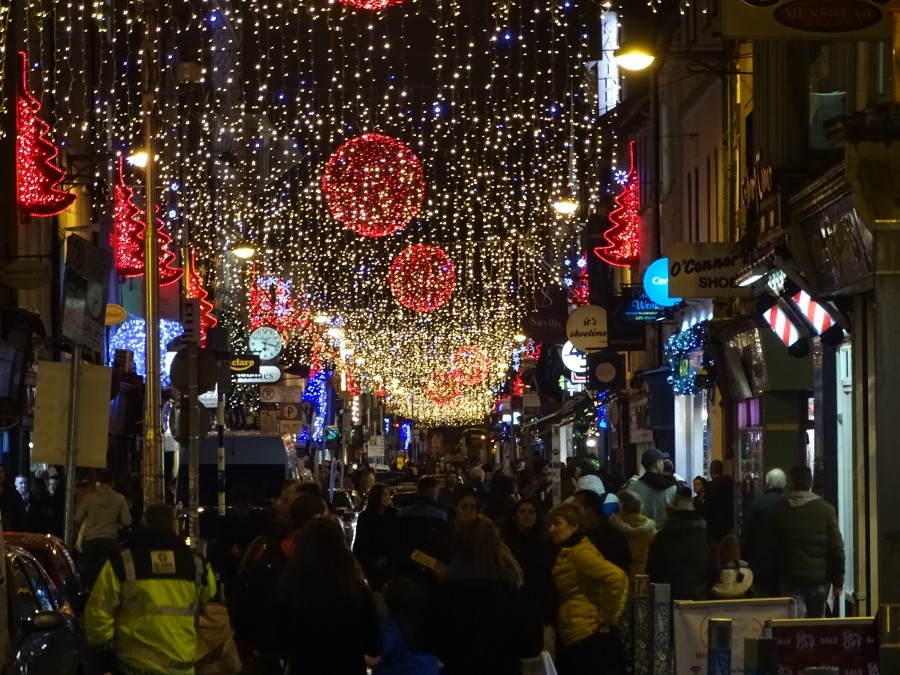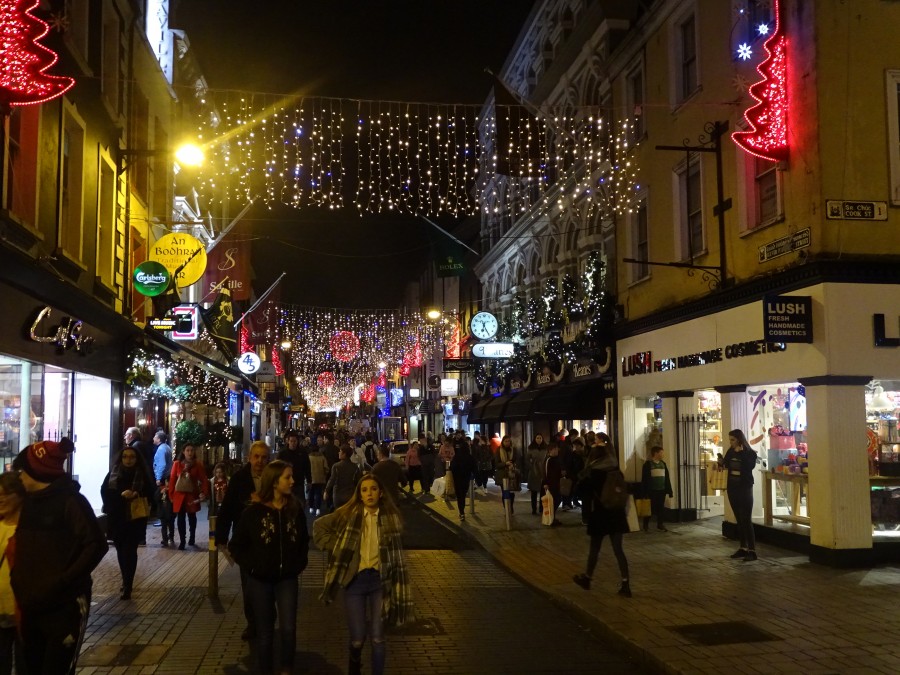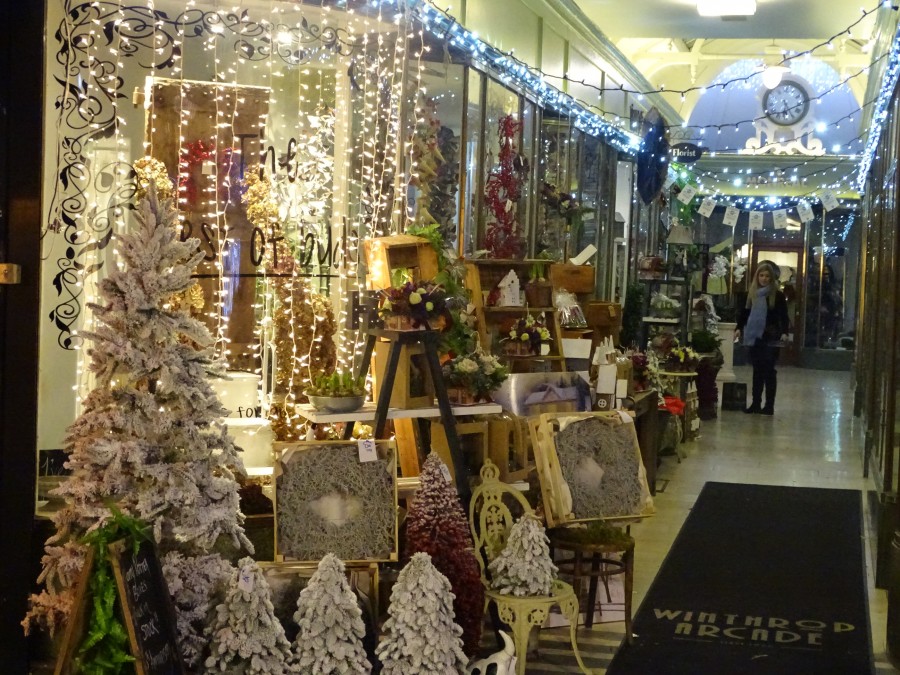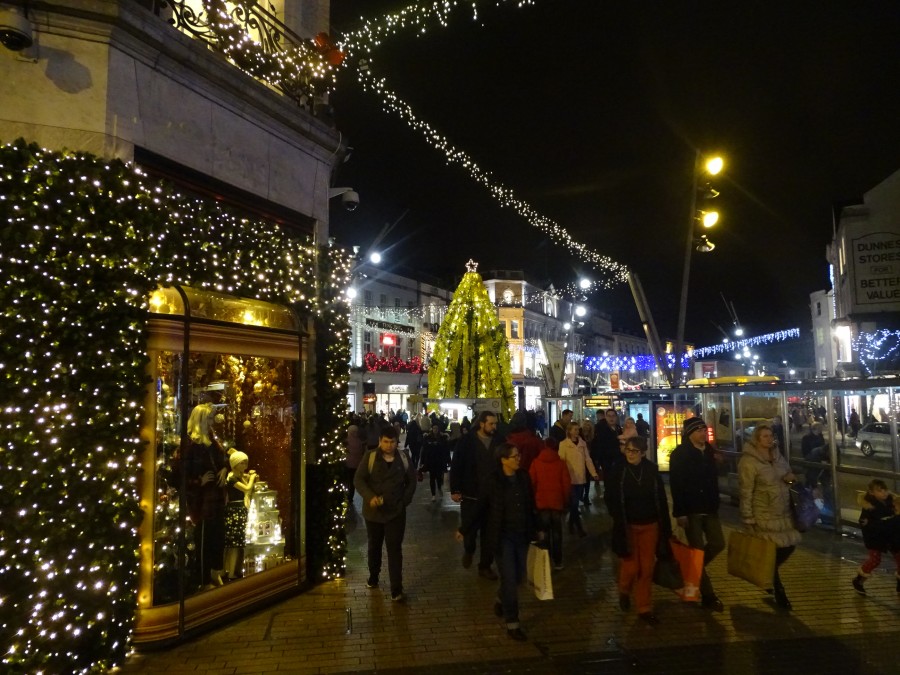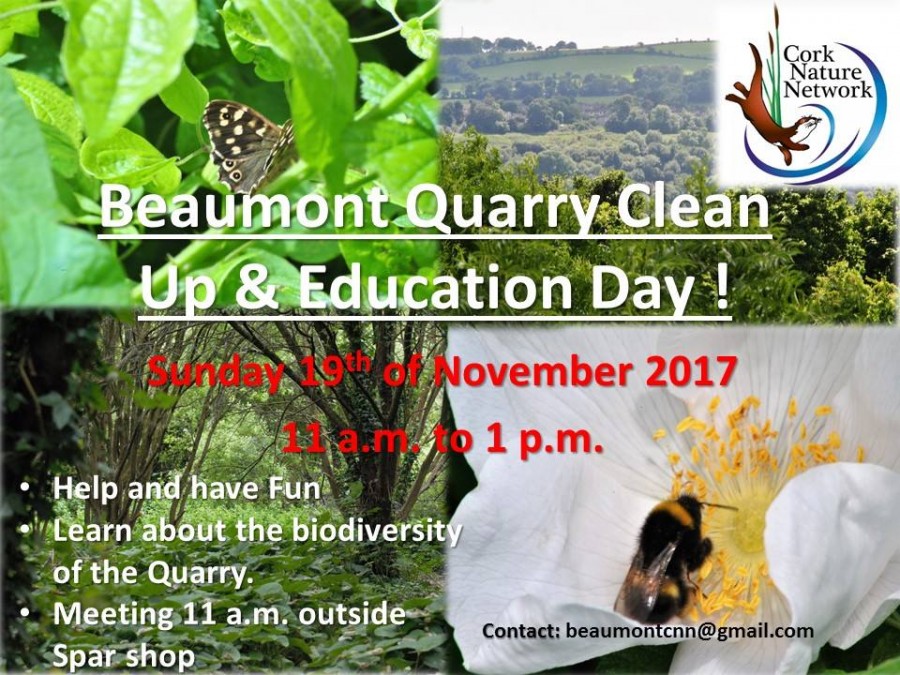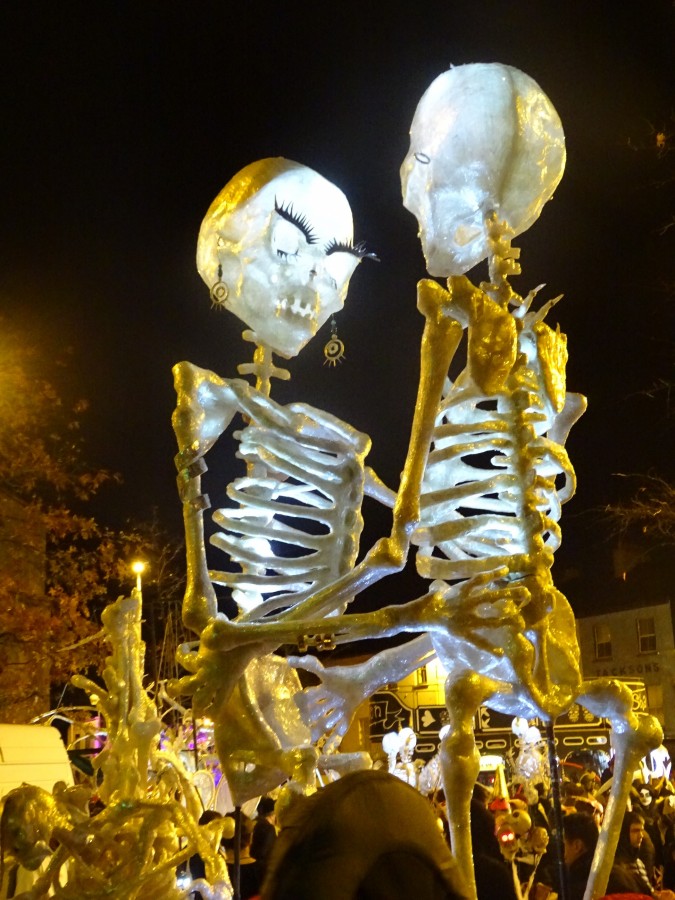Category Archives: Improve Your Life
Cork Lifelong Learning Festival 2018
The eagerly awaited 15th Cork Lifelong Learning Festival will take place from Monday 19 – Sunday 25 of March 2018. The annual festival has grown year on year since 2004 and lives by its motto of ‘Investigate, Participate, Celebrate’, with the public encouraged to do just that by trying out new experiences, participating in events and enjoying demonstrations of skills both new and old.
A week of hundreds of free events are aimed at all ages, from the very young to the young at heart, and all Lifelong Learning Festival events are open to all. The exciting programme includes performances, poetry, workshops, walks, displays and demonstrations, and really does have something for everyone. The only limit is your appetite to try something new. Some events can be in high demand so check the programme to see if you need to book.
Events, which aim to be accessible to all, take place right across Cork city, and into the county, in a variety of venues indoors and out, including shopping centres, libraries, museums, community and resource centres, parks, colleges, private businesses and on the streets.
Newly appointed Festival Organiser Siubhán Mc Carthy says: “Cork loves learning and to prove it we have a packed programme of free, accessible events open to all, regardless of your learning abilities or ambitions; I guarantee you’ll find something during festival week that you want to know more about. Learning is not just about gaining qualifications, it’s also about making life more fulfilling and enjoyable and I passionately believe in the power of knowledge to change lives for the better”.
This year’s festival includes four free seminars covering subjects as diverse as social inclusion to entrepreneurship and six ‘Learning Factory’ events across the week, in conjunction with CIT, which give an insider’s look at some of Cork’s most innovative businesses – including a guided tour of Inniscarra Dam. All events are hosted by volunteers be they individuals, community organisations, private businesses, schools or colleges.
The festival is a key part of the City’s strategy of making Cork a Learning City. Its success was recognised by UNESCO when Cork was one of the first 12 cities in the world to receive a Learning City Award in 2015 and Cork recently hosted UNESCO’s 3rd International Conference of Learning Cities in September 2017.
The free printed festival programme is out now and available in libraries, City Hall, the Tourist Office on Grand Parade, or from host venues
See the programme online at www.corklearningcity/lifelonglearningfestival
Deputy Lord Mayor, Cllr Kieran McCarthy, Launch of Volvo Week, 5 March 2018
Speech Notes, Deputising for the Lord Mayor,
Cllr Kieran McCarthy
The Edge of Memory
The Acupuncture of Landscape:
On behalf of the Lord Mayor, many thanks for the invitation to come and chat to you this afternoon for the launch of Volvo Week.
In the last few days our localities looked different – the familiar became the foreign – for many of us our homes, our neighbourhoods, our locales, our city, our town, our region felt different. It’s as if someone flipped a switch and turned the focus on our view to a different one – we admired different contours, we could not drive, we walked differently, we were excited, we remembered past times, we worried about missed work deadlines – in a sense we were stranded physically and perhaps mentally in a different looking world. Our surrounding snow-laiden landscape carved and sped up the creation of new perceptions.
But on any given day the landscape has the power to stop, impress, make one question, create an openness, wonder, dream, remember, be disturbed, explore and not forget – a whole series of emotions – acupuncture pins of an emotional sorts, which evolve who we are, our place in our world, our sense of place, our story, our culture, our identity.
The Land of Cork Harbour:
If landscape has these emotional acupunctural powers, a landscape such as Cork Harbour, of which we are just in one of its most historic quadrants, is a rich haven to try to understand our sense of place, our story, our culture, our identity.
Being the setting for Volvo Week, the second largest natural harbour in the world brings a focus and energy with which Cork Harbour has always been open to. The ebb and flow of the tide through the ages has carved a unique landscape of cliffs, sand and gravel beaches exposing an underlining geology of limestone and sandstone. Invigorating this landscape are a multitude of archaeological monuments inscribing it from different ages.
Colourful villages provide different textures and cultural landscapes in a sort of cul-de-sac environment where roads end at harbours, at car parks near coastal cliff faces, and quaysides – where signs warn the visitor of the edge. The villages are scattered around the edges of the harbour, each with their own unique history, all connect and add in someway to the greatness of this harbour.
In many areas, one can get the feeling you are at the ‘edge of memory’. There are the ruins of old structures, which the tide erodes away at. One can sense that a memory is about to physically and culturally get carried away by the sea and the fluidity of places-making shifts again. And that’s just the land part. Not everyone gets to view the harbour in a more holistic way from the water.
The Watery Landscape:
Through boating and sailing, we get to feel the harbour’s watery landscape – a more shift-shaping entity with a wide ranging juxtaposition of qualities – calm to rough, clear to foggy, playful light to darkness, dreamlike to fantasy – where stories almost stray between the ripples of the deep waters beyond – that if you stare long enough your mind creates its own scenes of place or re-imagines one’s life from days of yore.
The power of place and memory are ever present – the setting, the water, the past, the present, all colliding, at any one time knocking our sense of place.
And with all these emotional acupuncture pins- this box of ideas about place and memory, it is perhaps that today we return here to Haulbowline – to the first home of the Royal Cork Yacht Club (RCYC), which has successfully over near three hundred years played with the land and water element of the harbour, and defines joined up thinking on the holistic cultural use of the harbour.
The Historic Royal Cork Yacht Club:
The Royal Cork Yacht Club traces its origins back to 1720, a time when the City of Cork was taking down the limitations of being a walled town, and a time when iconic structures such as St Anne’s Shandon was being constructed in 1722 as well as aspects such as the Mardyke being laid out in 1719. Its story is richly laid out in Alicia’s St Ledger’s thick book of histories, illustrations and pictures. It began with the establishment, by six worthies of the time, of the Water Club of the Harbour of Cork, headquartered in the castle of Haulbowline Island – headed up by the 24-year-old William O’Brien, the 4th Earl of Inchiquin, and probably the first Admiral of the club. Membership was limited to 25 and strict protocol governed all the club’s activities, both afloat and ashore.
Racing proper did not begin until 1787 and, in the years prior to that, the club’s members contented themselves with sailing in a rather leisurely fashion around the harbour once a month from April to September on the spring tide.
Fast forward almost a hundred years from 1720 to circa 1813, a barracks to accommodate three officers and sixty men, two storehouses, a gun carriage yard, smithy and carpenters’ workshop and other installations were constructed.
Circa 1820, on the naval side of the island (i.e. the eastern side), a large victualling yard containing six large storehouses, living quarters for the supply staff and medical officers, houses for the Chief Surgeon, the coopers and other workshops were erected. The island was extended by 4.5 acres of reclaimed land in order to construct the flat wharfage area. The building contractor was Mrs Deane of Cork, who shortly afterwards was involved in building Cork City Gaol.
All followed by the creation of Rocky Island as an ammunition store and Spike Island as a convict prison.
Towards EU Maritime Day:
These stories and a multitude of others such as in Camden Fort Meagher, we are telling a lot more. Focus in the harbour in the last few years has been more and more on the power of the story of the harbour. That such a story is a jewel that we should try to understand and promote more. The RCYC is central to the story. Our harbour heritage sites capture a piece of life. And both Cork City Council and Cork County Council are parts of the pieces in helping that process. Cork City Council looks forward to hosting EU Maritime Day in 2020.
Volvo Week also creates new ways of seeing places, create ways of expressing ideas about the idea of place and create new ways of place making.
Perhaps for us the participant, the week presents a set of lenses or tools perhaps to decode, discover, recognise, reveal, synthesise, communicate, move forward and explore our cultural heritage, the environment, society and the very essence of identity-making.
Today’s Society also needs all of those traits and emotional acupunctural pins in abundance.
I wish everyone involved in this week well; I would like to thank Volvo and all the sponsors, the RCYC, the people of the harbour region well in hosting this enormous event.
I look forward to engaging with different aspects of the week and I look forward to the commemorative events of 2020.
Go raibh maith agaibh.
McCarthy: Striving for EU Green Capital a Must
Press Release
There are calls for Cork City Council to work more towards securing the EU Green Capital Award. The call was led by Independent Cllr Kieran McCarthy who raised the award scheme with the Executive of the Environment and Recreation Section; “there is a lot of great work going on under the city council’s environment and recreation directorate, Healthy Cities programme and Lifelong Learning – these should be harnessed more to pursue European awards, which in essence develop more the idea of Cork as innovative European second city in the north west quadrant of the EU – a city and region of ideas to draw from and be inspired from”.
The European Green Capital Award is the result of an initiative taken by 15 European cities. Their green vision was translated into a joint Memorandum of Understanding establishing an award to recognise cities that are leading the way with environmentally friendly urban living. The initiative was launched by the European Commission in 2008. It aims to reward cities, which are making efforts to improve the urban environment and move towards healthier and sustainable living areas.
In reply to Cllr McCarthy, David Joyce, Director of Services outlined, that Cork City Council applied for the 2017 EU Green Capital Award in October 2014. The process involves approx a three-year lead-time but unfortunately the Council’s application was unsuccessful. While a well written application was submitted by the City Council they did not score sufficiently high enough on a number of indicators to be in with a chance of winning the evaluation process. Mr Joyce outlined: “it is still the goal of the City Council to apply in the future for the EU Green Capital Award. We are actively addressing the action points, which were identified in the previous application process and once this is achieved we would look to make a submission in the future”.
In response Cllr McCarthy: “Preparing for such award schemes brings different relevant actors, agencies together. Joined up thinking is crucial when it comes to our region’s environment. Many of the responses from the Green Capital judges are still relevant, since their report was issued in mid 2015. Their responses are useful tools to help the Council plan and budget for. The judges who scrutinised Cork’s EU Green Capital application noted that many environmental initiatives are being pursued but more long term, regional and local committed funding was needed with more detailed plans”.
Summary of Judges’s Comments on Cork’s application for the EU Green Capital Award:
-
Local Transport: In the city centre, there have been many actions aimed at promoting the more sustainable modes, including restricting car access, pedestrianisation, a walking and cycling strategy with new cycle lanes and footpaths. There has also been an upgrade of the city’s bus and train stations and many other initiatives to encourage cycling, to raise public awareness and encourage behavioural change. The city’s public transport fleet is one of the oldest of the applicant cities, with no vehicles of Euro V standard or better.
-
Sustainable Land Use: Cork has an integrated and participatory approach to spatial planning with various aspects of spatial planning such as urban regeneration, urban development regulations, development and maintenance of green and open urban areas, and climate mitigation all being integrated in the City Development Plan (2009 & 2015). Regarding green areas, the City Development Plan seeks to ensure that the network of green infrastructure linkages are protected and enhanced to provide for movement and ecological networks, and that open spaces are designed to maximise their biodiversity so that people have access to nature close to where they live. it is not exactly clear how these are integrated into a wider green infrastructure and if there are connections to the green and blue areas beyond the city.
-
Nature and Biodiversity: Cork’s application on nature and biodiversity recognizes that the city faces difficulties in terms of present and future funding for biodiversity protection and enhancement work. There has been important work in the past on a Biodiversity Action Plan (to 2014, not fully implemented) and on habitat and species (for example, on trees and otters); monitoring work is limited.
-
Ambient Air Quality: Cork has a relatively good air quality with no exceedances of any of the indicators with a constant to slightly downward trend in concentrations. It has good air quality according to the air quality health index of Irish Environmental Protection Agency and is a WHO designated ‘Health City’ where air quality is one element.
The City has an Air Quality Management Plan from 2011 and has implemented a number of effective measures within regulation of space heating, industry and promoting more sustainable transport and land-use. An important local measure to improve air quality was the ban on bituminous coal in 1995 that reduced particulate levels by 70% and the ban was extended outside of the city bounds in 2012. Real-time and historic air quality information and also daily Twitter feed are provided by Irish Environmental Protection Agency to the public. Awareness campaigns e.g. within mobility and transport have been implemented.
-
Quality of the Acoustic Environment: Cork produced a five-year Noise Action Plan for 2013 – 2018 in which an acoustic zoning was proposed. This classification of territory focused primarily on potential noise sensitive groups (health care units, educational units, spiritual sites), however, the appropriate noise limits are missing. No mention is made to residential areas in particular. Stakeholder involvement and communication with citizens appear to be effective in what concerns the Action Plan; however, no budget or detailed schedules are provided in terms of this Action Plan thus risks exist that the outcomes may not be realised.
-
Waste Production and Management: The city has a well-functioning integrated waste management system in place which has progressed substantially over the last 15 years. More specific data and statistics in the application would help to verify the performance of the city in clearer detail. The City has a strong track record in the area of waste prevention and awareness with innovative waste prevention and industrial symbiosis projects in place. These projects are funded by the City in partnership with other business and community organisations and this model has been successfully applied to deliver many high level treatment projects.
Source segregated kerbside collections are widespread and growing with up to 4 different bins being provided to some households. However, this level of kerbside segregation is not widespread across the city with further progress to be made. The rate of recycling for municipal waste is estimated to be close to the European average although the date presented was a national figure.
-
Waste Water Treatment: 100 % of Cork’s wastewater is served by 2 drainage schemes and 1 WWTP. The design capacity of WWTP is well above calculated load for the year 2013. However the WWTP does not comply with the UWWTD regarding nutrient (N&P) removal. The City is aware of the need to effectively address this issue. The major issue to be addressed by future activities (required by UWWTD) is the treatment for nitrogen and phosphorous removal as well as disinfection which is considered important due to the shellfisheries.
-
Eco-innovation and Sustainable Employment: The application is well-structured covering many areas of eco-innovation. A cluster of private/public institutions has been established with the aim of branding Cork as European Technology Cluster (sustainable employment). The municipality is an active player in the development, i.e. providing financial support. Strategy and development plans are in place with a continuous review process. However the City is behind in Green Public Procurement and is waiting for the adoption of GPP guidance at the national level.
-
Energy Performance: Because Ireland’s energy operates as a pool market, there is no breakdown of energy use at a regional/city level. It is not clear how far Cork’s initiatives exceed the national ambitions. Data and information of energy performance in section A mainly focuses on sectoral energy consumption. No detailed information about the application of renewable energies or cogeneration is provided (even with regard to the specific consumption of municipal buildings (kWh/m2). The energy plan seems to be quite new and offers concrete goals for 2020 including 39 specific actions.
-
Integrated Environmental Management: Sustainability and environment is an important issue of the Cork Vision, City Development Plan 20092015 and the 2015-2021 Plan. It is not clear if the vision has been endorsed by the city council and who is politically responsible for the vision. It is not clear if the City takes its exemplary role serious enough. There is no indication of demonstrative actions within its own organisation. Environmental strategies are embedded through each of the Directorates. It is not clear which department or steering committee is installed to safeguard the environmental interests.
Happy Christmas!

Happy Christmas, time to slow down and enjoy!
Christmas in Cork City, December 2017
Evening Echo, Art Installation, Shalom Park, December 2017
Evening Echo by Maddie Leach, 19 December 2017:
Evening Echo is sited on old gasometer land gifted by Cork Gas Company to Cork City Council in the late 1980s, and subsequently dedicated as Shalom Park in 1989. The park sits in the centre of an old Cork neighbourhood known locally as ‘Jewtown.’ This neighbourhood is also home to the National Sculpture Factory. Not a specific commission, nor working to a curatorial brief, Evening Echo is a project generated as an artist’s response to the particularities of a place and has quietly gathered support from Cork Hebrew Congregation, Cork City Council, Bord Gáis and a local Cork newspaper, the Evening Echo.
References to the slow subsidence of the Jewish community in Cork have been present for years, but there is now a palpable sense of disappearance. Within the Cork Hebrew Congregation there are practical preparations underway for this, as yet unknown, future moment of cessation. Evening Echo moves through a series of thoughts and questions about what it might mean to be at this kind of cusp, both for the Jewish community and for other communities in Cork.
Evening Echo is manifested in a sequence of custom-built lamps, remote timing systems operated from Paris, a highly controlled sense of duration, a list of future dates, an annual announcement in Cork’s Evening Echo newspaper and a promissory agreement. Fleetingly activated on an annual cycle, and intended to exist in perpetuity, the project maintains a delicate position between optimism for its future existence and the possibility of its own discontinuance.
Maddie Leach’s work is largely project-based, site responsive and conceptually driven and addresses new thinking on art, sociality and place-based practices. She seeks viable ways of making artworks in order to interpret and respond to unique place-determined content and she is recognised for innovatively investigating ideas of audience spectatorship, expectation and participation in relation to art works. Leach’s projects include commissions for Iteration: Again (Tasmania, 2011), Close Encounters (Hyde Park Art Center, Chicago, 2010), One Day Sculpture (2008), the New Zealand publication Speculation for the Venice Biennale 2007 and Trans Versa (The South Project, Chile, 2006).
Ballinlough Christmas Concert, Sunday 3 December 2017
Always a great evening’s entertainment!

